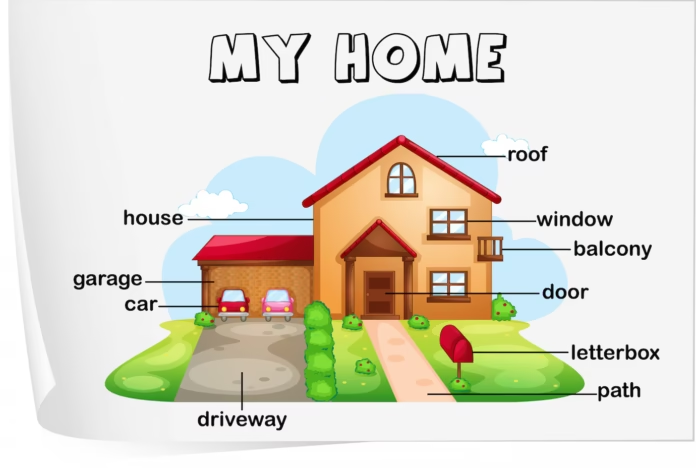Introduction:
Creating a home that reflects your personality, meets your needs, and provides a sanctuary from the outside world is an art. OC Home is all about designing spaces that are not only functional but also aesthetically pleasing and emotionally comforting. Whether you’re moving into a new space or revamping your current one, this guide will walk you through the essential elements of crafting the perfect home. From understanding your style to incorporating sustainable practices, let’s explore how you can transform your living space into a haven.
1. Understanding Your Personal Style
Your home should be a reflection of who you are. Before diving into decor and furniture, take the time to understand your personal style. Are you drawn to minimalist designs, or do you prefer a cozy, bohemian vibe? Perhaps you love the sleek lines of modern architecture or the timeless elegance of traditional decor. Start by creating a mood board with colors, textures, and patterns that resonate with you. This will serve as a foundation for all your design decisions. Remember, your style doesn’t have to fit into a single category—eclectic spaces that blend different elements can be just as stunning.
2. Maximizing Space and Functionality
No matter the size of your home, maximizing space and functionality is key to creating a comfortable living environment. Start by assessing the layout of your rooms and identifying areas that feel cramped or underutilized. Multi-functional furniture, such as sofa beds, storage ottomans, and foldable tables, can be a game-changer in smaller spaces. Open shelving and vertical storage solutions can also help keep your home organized without sacrificing style. Think about how you use each room and tailor the design to support those activities. For example, a home office should prioritize productivity, while a living room should encourage relaxation and socializing.
3. The Power of Color and Lighting
Color and lighting are two of the most powerful tools in interior design. The right color palette can set the mood for your entire home, while lighting can enhance the ambiance and functionality of each space. Neutral tones like beige, gray, and white create a calming atmosphere, while bold colors like deep blue or emerald green can add drama and personality. When it comes to lighting, aim for a mix of ambient, task, and accent lighting. Layering these types of light ensures that your home is both practical and inviting. Don’t forget to incorporate natural light wherever possible—it can make a space feel larger and more vibrant.
4. Incorporating Sustainable Practices
As we become more conscious of our environmental impact, sustainable home design is gaining popularity. From energy-efficient appliances to eco-friendly materials, there are countless ways to make your home greener. Consider using reclaimed wood for furniture, installing solar panels, or opting for low-VOC paints. Even small changes, like switching to LED bulbs or using reusable decor items, can make a difference. Sustainability isn’t just good for the planet—it can also create a healthier living environment for you and your family.
5. Adding Personal Touches
A house becomes a home when it’s filled with personal touches that tell your story. Display family photos, travel souvenirs, or artwork that holds special meaning. Incorporate textiles like throw pillows, rugs, and curtains that add warmth and texture. Don’t be afraid to mix and match different styles—this is what gives your home character. Plants are another great way to personalize your space while improving air quality and adding a touch of nature. The goal is to create a space that feels uniquely yours.
6. Creating Outdoor Living Spaces
Your home’s design shouldn’t stop at the front door. Outdoor spaces, whether it’s a balcony, patio, or backyard, can be an extension of your living area. Invest in comfortable outdoor furniture, add string lights or lanterns for ambiance, and incorporate greenery to create a relaxing retreat. If space allows, consider adding a fire pit or outdoor kitchen for entertaining. These areas can become your go-to spot for unwinding after a long day or hosting gatherings with friends and family.
7. Staying Organized and Clutter-Free
A well-designed oc home is one that stays organized and clutter-free. Regular decluttering sessions can help you maintain a sense of order and prevent your space from feeling overwhelming. Invest in storage solutions that are both functional and stylish, such as decorative baskets, built-in cabinets, or floating shelves. Adopting a “less is more” mindset can also help you focus on the items that truly matter, ensuring that your home remains a peaceful and inviting environment.
Conclusion:
Designing the perfect oc home is a journey that requires thought, creativity, and a willingness to experiment. By understanding your personal style, maximizing functionality, and incorporating sustainable practices, you can create a space that is both beautiful and practical. Don’t forget to add personal touches that make your home uniquely yours, and extend your design efforts to outdoor spaces for a seamless transition between indoors and out. With these tips, you’ll be well on your way to crafting an OC Home that you’ll love for years to come.


